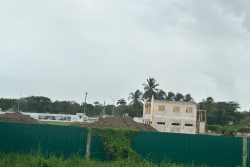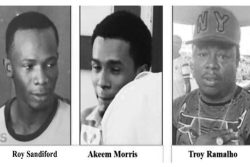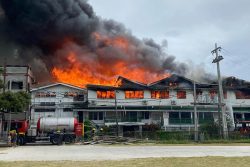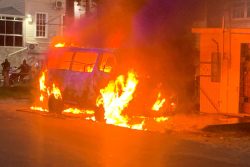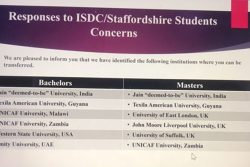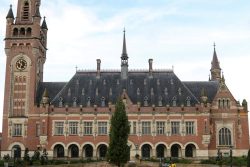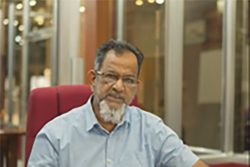Dear Editor,
The Peoples Temple Agricultural Project (Jonestown) was the subject of recent discussions in the local media. A comprehensive history of the 1978 mass murder/suicide has been compiled by the San Diego State University (SDSU): http://jonestown.sdsu.edu. Eusi Kwayana authored a book on Jonestown, which I reviewed some time ago. I agree with Kit Nascimento that a private tour company may choose to exploit Jonestown for profit, but the Guyana Government should not. Tourists may be more inclined to visit Guyana should the government lobby the World Heritage Committee to make permanent our five UNESCO designated landmarks.
Renewed interest in Jonestown is a reminder that we cannot escape from collective traumas of the past. Like Jonestown and Mahdia, Linden, a vibrant enclave of economic development in the 1960s, bears the scars of two national tragedies – the anti-Indian violence in Wismar in May and the Son Chapman river launch explosion at Hurudaia in July 1964. In the latter, 43 Africans died. Cheddi Jagan referred to the anti-Indian acts of May 23-26, 1964, as a “massacre.” Dr. Davies-Webb of Mackenzie Hospital acknowledged that on July 7, five Indians among 300 re-invited by Demba were killed before police could conduct an investigation into the explosion. No evidence of human subversion was ever established as the cause of the explosion.
Under Chapter 59 of the Commission of Inquiry Ordinance, a COI was gazetted, with meetings held at 252 Thomas and Murray streets, commencing on October 31, 1964. Commissioners were tasked with investigating the “disturbances which took place at Wismar, Christianburg, and Mackenzie… investigate the conduct of the Security Forces…and to determine the number of deaths and the extent of injury, loss, and damage.” The Commission met for 19 days, interrogated 86 witnesses (6 on camera), and recalled 8 for further testimony. The COI Report concluded that: “We have come to the conclusion that the disturbances which took place in the Wismar-Christianburg-Mackenzie area on May 25th, 1964, were politically and racially inspired… the thorough-going destruction of East Indian property, and the fact that the security forces were in no case able to apprehend arsonists force us to conclude that the destruction was not ‘spontaneous’ but was organised, and well organised.”
The attacks were precipitated by the murder of an elderly African couple in Buxton on May 21. Richard Mohammad Khan, an 18-year-old PYO supporter from Georgetown visiting his family (of seven), and Paul Mirgin, owner of a general store in Wismar who operated a tug boat with his wife and four sons, were murdered. Their families resided in Valley of Tears, now renamed Victory Valley. Two Africans died, Byron Wharton (trapped in a burning building) and Gussie English was shot by police while “involved in looting.” The father of PPP Senator, Christina Ramjattan was also killed (May 28th).
The COI allocated responsibility for the Wismar 1964 tragedy among several individuals: the PNC representative in Wismar (Robert Jordan), members of the BG Police Force and the BG Volunteer Force, Commissioner of Police, PPP Senator from Section C, Christianburg (Christina Ramjattan), Assistant District Commissioner (Patrick Bender), Chairman of the Local Authority (Festus Adams), Government Dispenser and Sub-Registrar of Births and Deaths in the area (Albert Jairam), a known criminal nicknamed “Banga Mary,” among others. The unarmed Demba constabulary and the British Army (in Guyana since the 1962 Black Friday riots) patrolled the area after May 26, the day Indians were evacuated to the Ruimveldt Industrial Site by the MV Barima and RH Carr.
Readers may contend that national traumas should remain buried in the archives because the politics of the 1960s still inflame primordial sentiments. Indeed, a 2008 UN-funded study conducted by Help and Shelter and Red Thread (with Alissa Trotz as lead investigator) interrogated residents from Wismar and concluded that the “The violence against Indian-Guyanese in Wismar, and specifically the sexual assault of women and girls appear to have been wiped clean from the memories of African-Guyanese, while for Indian-Guyanese they remain stark as an unforgivable assault on the whole community.” Those who argue that Wismar 1964 should be silenced must consider two observations.
First, President David Granger was instrumental in erecting a memorial for the victims of Son Chapman. The motto etched on the Son Chapman Monument on the Wismar waterfront echoes Santayana’s warning: “Those who forget the lessons of history do so at our own peril.” To date, nothing has ever been done in memory of the Wismar refugees, who left everything behind (including land). Yet, prominent speakers at the annual Son Chapman
commemoration never mentioned the anti-Indian acts of May 1964, thereby contributing to the silence of atrocities committed against their fellow humanity.
Second, Wismar 1964 and Son Chapman, can potentially contribute to reconciliatory national dialogue. In a country where race politics persists and national dialogue is absent (including handshakes!), where politicians often eschew moral responsibility, and in the face of an approaching election that will surely reveal our fractured society, a younger generation ought not be held hostage to our historical aberrations.
Both Opposition Leader Aubrey Norton and Linden Mayor Sharma Solomon acknowledged that the events of May 1964 (and Son Chapman) can potentially contribute positively to a national dialogue but object strongly to the word “massacre.” Their thinking resonated with the narrative of the Commissioners, who noted that “When one considers the number of East Indians evacuated, the large number of Africans in the area, and the negligible opposition which the attackers encountered, the number of fatalities was indeed very small.” However, the level of violence, property destruction and trauma directed at the minority Indian community cannot be reduced to casualties alone. As per the COI, “more than 200 houses and business places” were destroyed, and “more than 3000” families became refugees. On May 25 alone, “there were 57 cases of assault, including rape” and “197 houses were destroyed” in addition to “cases of looting.”
As former President Donald Ramotar reminds us, Wismar 1964 is embedded in the divisive stain of colonialism. This reality imposes considerations that should guide any national discourse. One, references to Wismar 1964 should not be centered around victimhood. The COI noted that there was no record of Indian reprisals, but some Africans, at great risk to their own lives, provided shelter and safe passage to Indians during their moment of siege. Two, reconciliatory dialogue, as with the South African experience, should not be about good versus evil. British Guiana was in the throes of a high stake competitive political struggle. Indians were also engaged in retributions against Africans. Three, reconciliatory dialogue should not be viewed as an occasion for establishing claims to moral superiority.
The “Dubai” of the Caribbean promises a bright future for our young people – but we ought to acknowledge our growing pains. The victims of Wismar deserve closure.
Sincerely,
Baytoram Ramharack
